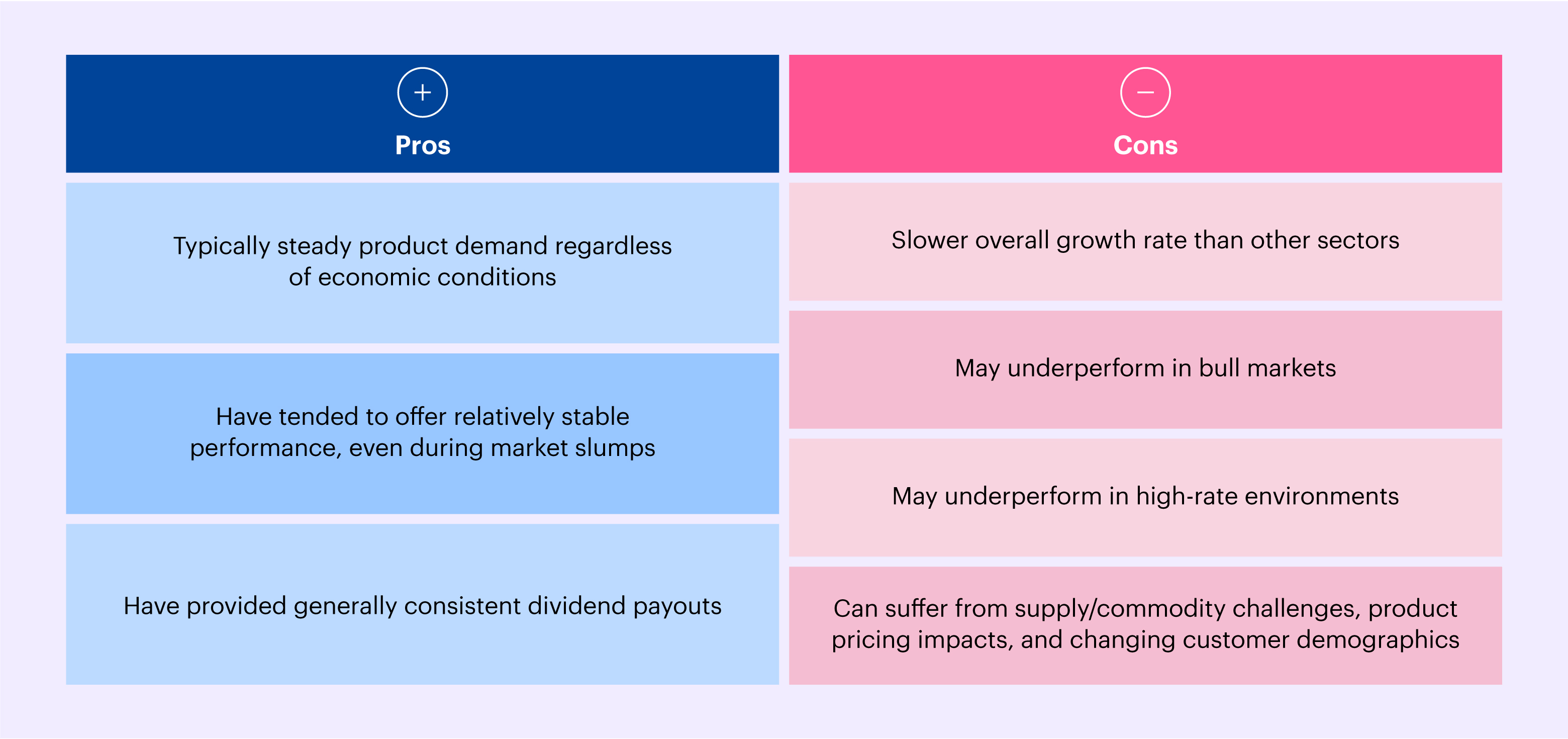Breaking down the consumer staples sector
E*TRADE from Morgan Stanley in collaboration with Morgan Stanley Wealth Management
09/30/21Summary: The consumer staples sector consists of goods that are constantly in demand, offering an option for investors seeking to incorporate a defensive strategy into their portfolios.

One of the 11 sectors in the S&P 500®, consumer staples are products necessary for day-to-day life. The companies in this sector cover a lot of ground: food and beverages (including alcohol), hygiene products (like shampoo, toothpaste, and soap), household items such as paper products and cleaning supplies. They also include retail companies (like supermarkets and drugstores), cosmetics, and even tobacco.
Potential benefits
The consumer staples sector represents non-durable goods (i.e., goods that need to be continually replaced) that are in constant demand—regardless of the state of the economy or the time of year, consumers are unlikely to stop buying food, beverages, or household products. In fact, demand may even increase during uncertain times—the hyper demand for toilet paper in 2020 as a result of the pandemic is a prime example.
Investors tend to incorporate consumer staples as a defensive strategy and often look to the sector for a source of stability during market slumps and recessions. These non-cyclical companies tend to offer relatively steady performance with consistent dividend payouts, making them appealing to certain investors, including retirees, conservative investors, and those looking to diversify their portfolios overall.
Potential risks
On the other hand, the slower nature of the sector may make it less appealing to aggressive investors who are looking to take on a higher degree of risk in return for greater potential rewards. Investors seeking rapid earnings growth are unlikely to find it in consumer staples.
Other risks such as potential fluctuations due to demographics and product trends, pricing, fads, environmental factors, government regulation, consumer confidence, and the cost of the commodities can also factor into these companies’ performance.
As with any investment, it's important to study the fundamentals of a company or fund before going all in. Most investor portfolios will benefit from a diversified approach to investing with consumer staples as one component. Investors should consider time horizon, risk tolerance, and financial goals when deciding how much of their portfolio to allocate toward consumer staples.
How can E*TRADE from Morgan Stanley help?
Thematic Investing
Find ETFs that align with your values or with social, economic, and technology trends.
Choice Funds
Choose from a list of exchange-traded funds or mutual funds selected by Morgan Stanley Smith Barney LLC.
Brokerage account
Investing and trading account
Buy and sell stocks, ETFs, mutual funds, options, bonds, and more.
What to read next...
Looking to expand your financial knowledge?
| Pros | Cons |
|---|---|
| Typically steady product demand regardless of economic conditions | Slower overall growth rate than other sectors |
| Have tended to offer relatively stable performance, even during market slumps | May underperform in bull markets |
| Have provided generally consistent dividend payouts | May underperform in high-rate environments |
| Can suffer from supply/commodity challenges, product pricing impacts, and changing customer demographics |
